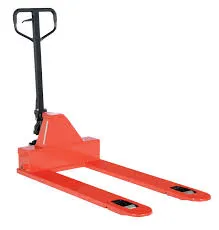


Understanding Fall Arrest Systems Ensuring Safety at Heights
In various industries, particularly construction and maintenance, workers often find themselves at heights where falls can lead to severe injuries or fatalities. To combat this risk, fall arrest systems have become a crucial part of safety protocols. This article explores the components, types, importance, and best practices associated with fall arrest systems.
What is a Fall Arrest System?
A fall arrest system is designed to safely stop a person from falling to the ground or lower levels. These systems do not prevent a fall from happening but rather mitigate the consequences should a fall occur. The primary components of a fall arrest system include
1. Anchor Points These are secure points to which the fall arrest system is attached, ensuring it can withstand the forces exerted during a fall. Anchors should be strategically placed and inspected regularly for structural integrity.
2. Body Harness A body harness is worn by the worker and is designed to distribute the impact of a fall across the body. It is essential that the harness is fitted correctly to ensure maximum safety and comfort.
3. Lanyards and Lifelines These are connecting devices that link the harness to the anchor point. Lanyards may include shock absorbers that reduce the force of impact when a fall occurs.
4. Safety Equipment Additional safety gear, such as helmets and gloves, should be worn to provide further protection from potential hazards.
Types of Fall Arrest Systems
There are generally two main types of fall arrest systems structural and personal.
1. Personal Fall Arrest Systems (PFAS) These systems are designed for individual use and include the harness, lanyards, and anchorage points. PFAS are widely used in construction, where workers are often at risk of falling.
2. Safety Nets Installed below a work area, safety nets catch falling workers and tools. They are particularly effective in construction sites where workers operate at significant heights.
3. Guardrails While not a traditional fall arrest system, guardrails can be a proactive measure to prevent falls in the first place, particularly on rooftops and balconies.

The Importance of Fall Arrest Systems
The implementation of fall arrest systems is vital for several reasons
- Worker Safety First and foremost, these systems protect the lives of workers. According to OSHA (Occupational Safety and Health Administration), falls are one of the leading causes of workplace injuries and fatalities. Effective fall arrest systems can significantly reduce the incidence of such accidents.
- Legal Compliance Many countries have strict regulations regarding working at heights. Companies are legally required to provide fall protection systems to ensure the safety of their workers. Failure to comply can result in hefty fines and legal consequences.
- Economic Benefits Implementing fall arrest systems can lead to cost savings in the long run. Workplace injuries can lead to increased insurance premiums, lost productivity, and costs associated with hiring and training replacement staff. By investing in safety measures, businesses can safeguard their workforce and their bottom line.
Best Practices for Fall Arrest Systems
To ensure the effectiveness of fall arrest systems, adherence to best practices is essential
1. Training Workers must receive proper training on how to use fall arrest systems. This includes understanding how to properly wear a harness and how to perform a pre-use inspection of safety equipment.
2. Regular Inspection All components of fall arrest systems should be regularly inspected for wear and tear. Any damaged equipment must be repaired or replaced immediately.
3. Correct Setup It is crucial to set up fall arrest systems correctly, ensuring that anchor points are secure and that the system is properly configured for the task at hand.
4. Emergency Preparedness Workers should be trained in emergency response procedures in the event of a fall, including how to rescue a colleague safely.
Conclusion
In conclusion, fall arrest systems are an indispensable aspect of safety in industries that involve work at heights. By understanding their components, types, and importance, and by adhering to best practices, employers and employees can create a safer work environment. Prioritizing safety not only protects workers but also promotes a culture of care and responsibility within organizations. As we continue to prioritize safety, we ensure that every worker can return home safely at the end of the day.



